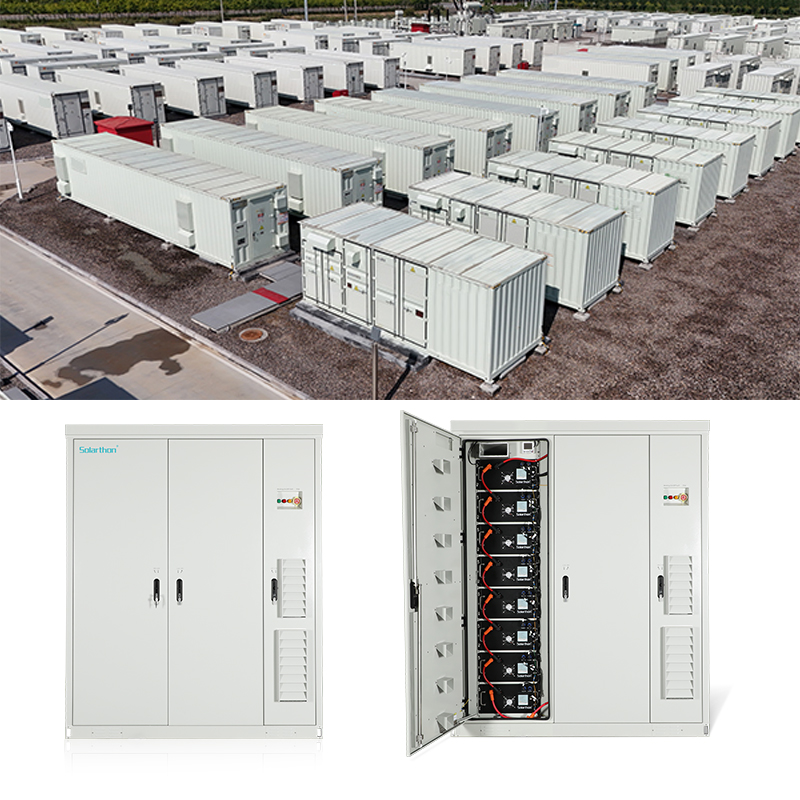Views: 6 Author: Site Editor Publish Time: 2024-11-16 Origin: Site
The 215kWh integrated energy storage system is a comprehensive solution that integrates a battery module, a battery management system (BMS), an inverter, a control system and a monitoring system. This system is designed for efficient storage and management of electrical energy and is suitable for a variety of application scenarios, such as home, commercial, industrial and grid peaking. The following are the main features and working principles of the 215kWh integrated energy storage system:

1. Main components
•Battery module: The core energy storage unit, usually using high energy density lithium-ion batteries, with a total capacity of 215kWh.
•Battery Management system (BMS) : Monitors and manages the status of the battery to ensure the safe operation of the battery, including voltage, current, temperature and other parameters monitoring.
•Inverter: Converts direct current (DC) to alternating current (AC) in order to connect with the grid or load to achieve two-way flow of electrical energy.
•Control system: Coordinate the work of various components, charge and discharge management according to demand, optimize energy utilization.
•Monitoring system: real-time monitoring system status, provide data support and fault diagnosis, support remote management.
2. How it works
2.1 Charging Process
1.Energy input: Obtain electricity from solar panels, wind turbines or the grid.
2.Dc conversion: If the input is alternating current (such as from the grid), the inverter converts alternating current to direct current.
3.Battery charging: Direct current is controlled through the battery management system (BMS) and safely charged into the battery module.
4.Condition monitoring: BMS monitors the battery's voltage, current, temperature and other parameters in real time to ensure the charging process is safe.
2.2 Discharge Process
1.Energy output: When the stored electrical energy is needed, the battery module releases direct current.
2.Dc conversion: Inverters convert direct current to alternating current for use by domestic, commercial or industrial loads.
3.Load power supply: Alternating current is transmitted to various electrical equipment through the distribution system.
4.Condition monitoring: BMS monitors the discharge status of the battery in real time to ensure the safety of the discharge process.
3. Control strategy
•Peak load reduction: During peak hours, the energy storage system releases electricity to reduce the pressure on the grid.
•Valley load transfer: During the off-peak period of electricity consumption, the energy storage system is charged to take advantage of the lower electricity price.
•Self-sufficiency: Partial or total self-sufficiency in combination with renewable energy sources such as solar panels.
•Emergency backup: In the case of power grid failure or power failure, the energy storage system provides backup power to ensure the operation of key equipment.
4. Monitoring and maintenance
•Real-time monitoring: Through the monitoring system, users can view the status of the energy storage system in real time, including electricity, power, temperature, etc.
•Remote management: Supports remote operation and management, facilitating maintenance and troubleshooting.
•Periodic maintenance: Periodically check the battery module and control system to ensure long-term stable operation of the system.

5. Application Scenarios
•Home energy storage: Households install energy storage systems to achieve self-sufficiency and reduce electricity costs.
•Commercial energy storage: Commercial buildings and industrial plants install energy storage systems to optimize energy management and reduce operating costs.
•Power grid peak adjustment: Power grid companies use energy storage systems for peak adjustment, balance supply and demand, and improve power grid stability.
•Remote areas: Provide reliable power supply to remote areas and solve the problem of power shortage.
6: Advantages
•High energy density: The total capacity of 215KWh provides sufficient energy storage capacity for a variety of application scenarios.
•Intelligent management: Advanced battery management system and control system ensure efficient operation and safety of the system.
•Flexibility: Support a variety of energy input and output methods to adapt to different energy needs.
•Reliability: After rigorous testing and verification, to ensure the long-term stable operation of the system.
Sum up
The 215kWh integrated energy storage system enables flexible use of electrical energy through efficient energy storage and management, improving energy sustainability and reliability. This kind of system is not only suitable for home and commercial users, but also can provide reliable power supply in the peak of the grid and remote areas







